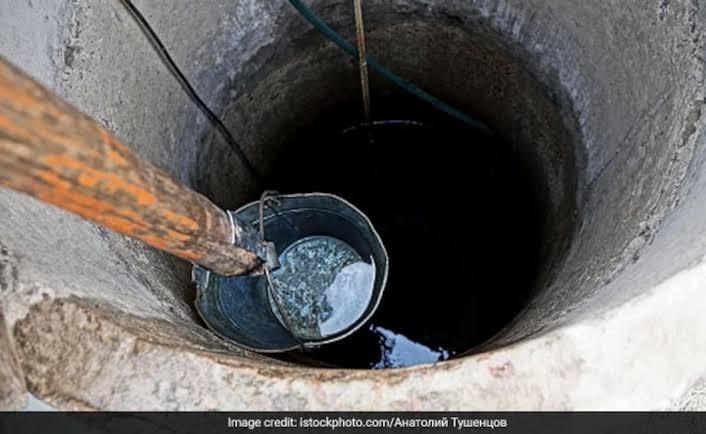Uranium levels in drinking water samples from Durg, Rajnandgaon, Kanker, Bemetara, Balod, and Kawardha in Chhattisgarh were found to be more than 100 micrograms per liter.

New Delhi :
In at least six districts of Chhattisgarh, drinking water sources have been found to contain dangerously high levels of uranium, three to four times the WHO’s 15 microgram per litre limit and even higher than the government’s 30 microgram per litre limit. This greatly raises the risk of pulmonary disorders, cancers, skin and kidney diseases, and other conditions. While acknowledging that “there are uncertainties (if) concentrations above this would be of concern,” the WHO recommended in 2017 that the amount of uranium in drinking water not exceed 15 micrograms per liter. Additionally, according to the global health organization, other nations, including India, have doubled that allowable level.
According to a June research by the Bhabha Atomic Research Centre, even 60 micrograms per litre are safe. Testing of drinking water samples from Durg, Rajnandgaon, Kanker, Bemetara, Balod, and Kawardha in Chhattisgarh, however, revealed uranium levels above 100 micrograms per litre; one sample from a village in Balod had as much as 130 micrograms per litre, while another from Kanker had 106 micrograms per litre. The average measurement was between 86 and 105 micrograms of uranium per liter for all six districts. A 25-year-old borewell in the village of Devtarai in Balod provided the initial samples for testing. The state’s Public Health Emergency Department double-checked the results.
“There is no other source of water in the village… one day we came to know that research was done and some students took water from here, in which uranium was found,” Daneshwar Sinha, the village chief, explained, “… after that we ran to the PHE Department and it was tested once again.” The town has recently opened a second bore, although it’s unclear if the water comes from a different source or if the new well’s uranium levels are within acceptable bounds.
Samples from all six districts were sent to the Bhilai Institute of Technology in Durg following the Devtarai red flag, and Dr. Santosh Kumar Saar, the chair of the university’s Chemistry Department, validated the results, which ranged from 86 to 105 micrograms of uranium per litre. In each of the six districts, BIT scientists collected samples from a six square kilometer area. India’s Groundwater Containing Uranium Health officials have long been concerned about uranium in groundwater; a Central Groundwater Board study from January of last year stated that it had exceeded allowable levels in 12 states, including Punjab and Haryana, which provide more than half of the nation’s wheat supply.
Kerala samples had no uranium, but samples from 13 other states had it within predetermined bounds. Similar high levels of uranium in water were reported in nine districts of Bihar in August 2022. “Uranium contamination in groundwater is a matter of serious concern, as it is hazardous to those who are exposed,” Ashok Kumar Ghosh, the State Pollution Control Board’s chairman at the time, told news agency PTI. High exposure can lead to cancer, reduced renal function, and bone damage. Karnataka had also recorded elevated uranium levels in water a few months prior.
Uranium Contamination Solution?
In the meantime, Chhattisgarh might also have a solution to the uranium-in-water issue. According to a study conducted by three BIT scientists under the direction of Poonam Deshmukh, uranium can be filtered using gooseberry (amla) tree bark. Although the technology has been trademarked, it has not yet been put into practice. Ms. Deshmukh published her findings in the Groundwater for Sustainable Development in 2021. “We reasoned that there ought to be corrective measures in place if there is uranium contamination in the water. Our ‘bio-adjusting’ technique was created, and amla bark produced the best results. Given that Chhattisgarh contains four known deposits of 100% quality uranium, three of which are in the Rajnandgaon area, widespread use of such filtering procedures must be a priority.